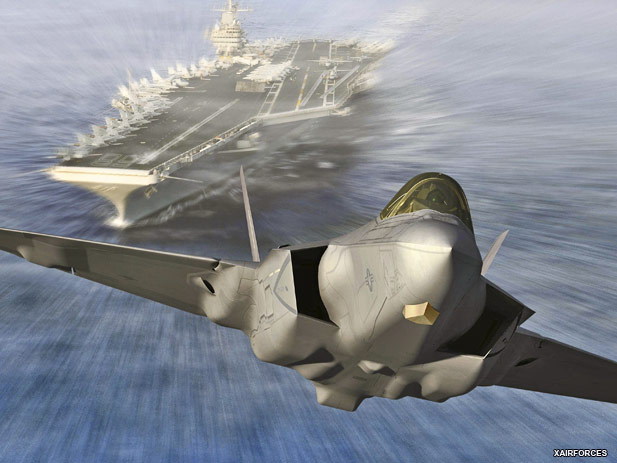All F-35s cleared for flying
dd 25 Aug 2011
"The Pentagon's F-35 Joint Program Office today cleared the remain eight F-35 jets to resume testing and training flights in the wake of the grounding of all 20 jets three weeks ago following the failure of the integrated power package (IPP) on one of the test jets at Edwards Air Force Base.
The 12 developmental test jets were allowed to resume flights last week since they are heavily intstrumented and the conditions of the IPPs could be monitored. The other eight aircraft, all from the first two lots of low-rate initial production planes (LRIP 1 and 2, 14 planes total) remained grounded until Thursday's release.
Lockheed issued the following statement:
'The JPO has authorized F-35 production jets to fly again. They are now flying the same profiles they were prior to the precautionary suspension of operations. This includes acceptance flights at Ft Worth and ferry flights to Eglin. Government and contractor engineering teams determined the program could resume production flight operations while the IPP investigation continues. This assessment was made after reviewing data from ground and flight tests. This data showed, with revised emergency procedures governing IPP failures in place, the aircraft can be flown safely.'
For those who might be following the program very closely, Lockheed provided the following details on what jets are where:
- Six planes are at Edwards: Developmental test jets AF-1 through AF-4 and production jets AF-6 and AF-7, which are being used in developmental testing.
- Eight developmental test planes are at Patuxent River: Marine short-takeoff-vertical-landing models BF-1 through BF-5 and carrier variants CF-1 through CF-3.
- Two low-rate production planes, AF-8 and AF-9, are now at Eglin Air Force Base in Florida preparing for pilot training.
- Four additional A models, AF-10 through AF-13, are in Fort Worth and have all been flown but have not yet been turned over to the military, although two have been formally "delivered."


